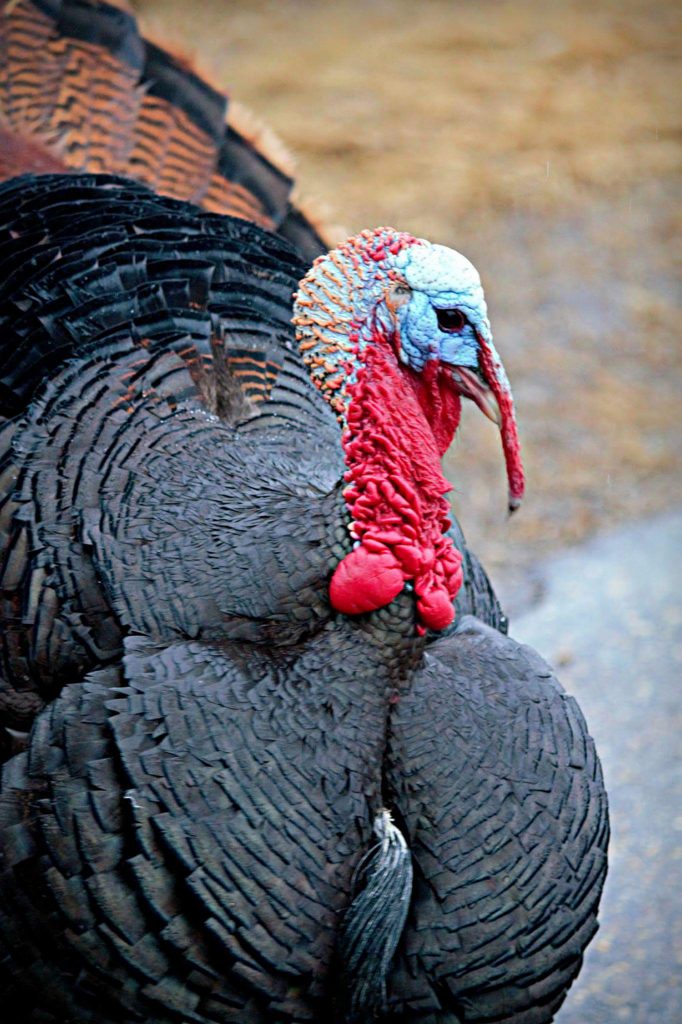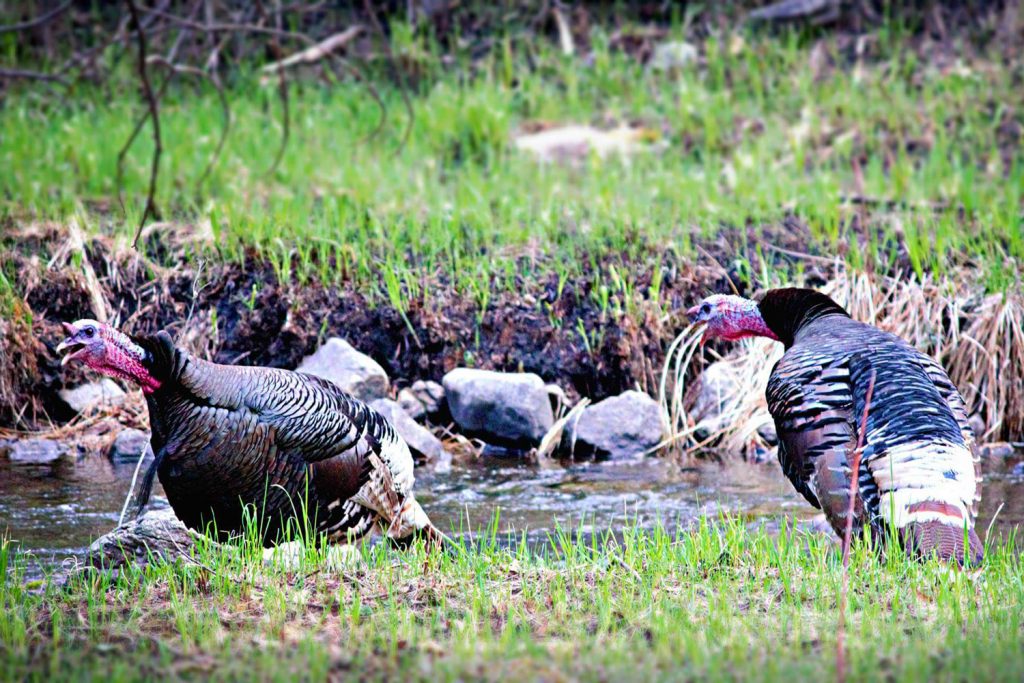Chasing the Grand Slam
The Grand Slam will take you around the country, chasing each of the four most common wild turkey subspecies in the U.S.: Eastern, Merriam’s, Osceola and Rio Grande.
The NWTF recognizes several types of “slams.” Here, in the U.S., there are three recognized slams, and one that mixes U.S. hunting with a Mexican twist. All of these slams are considered top feats or goals to diehard turkey hunters. The Grand Slam will take you around the country, chasing each of the four most common wild turkey subspecies in the U.S.: Eastern, Merriam’s, Osceola and Rio Grande. Add a Gould’s to your Grand Slam and you’ve got a Royal Slam. If you’re feeling spicy, head to Mexico to hunt an Ocellated turkey and you’ve got yourself a World Slam.
There’s also the Canadian Slam, which consists of shooting an Eastern and a Merriam’s in any Canadian province, and the Mexican Slam, completed by killing a Rio Grande, Gould’s and Ocellated south of the border.
Then there is the Mt. Everest of slams: the U.S. Super Slam. Finishing the Super Slam involves tagging a wild turkey in each of the 49 states that have turkeys (Alaska is void of turkey tags).

Being introduced to turkey hunting in Minnesota in the 1990s, I can recall the first ever turkey stamp issued in 1996. I believe that stamp still resides in my memorabilia box. Back then, turkeys were only huntable in the southwestern portion of the state. Now, turkeys are huntable in nearly every county in Minnesota. It wasn’t until the wildfire-type spread of the Eastern wild turkey in Minnesota that my addiction really took hold. I began traveling to other states, taking friends and family members out, and really tuning in to turkey talk and the nuances and gear in the turkey hunting scene. Moreover, the quest for my Grand Slam was born.
Eastern wild turkey
The Eastern subspecies is the most widespread of the five subspecies. You can find Easterns in many states, and most consider them the wiliest of all of the subspecies. These smart, loud-roaring gobblers carry above-average spur length and full beards; it’s hard not to get excited about an Eastern in strut. They have mild-brown or chestnut-colored tips on their fans and rump feathers and possess noticeable white barring on their large wings.
As mentioned, Minnesota is now loaded with turkeys, and nearly all of them are the Eastern subspecies. Minnesota does have some hybrids in the western part of the state, where stocking efforts from North and South Dakota tribes have bled over. My first Eastern was shot with my first pump, a Remington 870 12 gauge with Remington Nitro No. 5 shot. After killing several Eastern gobblers, I was one-fourth of the way to the Grand Slam.
Rio Grande wild turkey
The Rio Grande, or “Rio” to most, is sometimes referred to as the “desert bird.” The nickname comes from the climate in which the Rio resides and thrives. Dry, arid areas like Texas, Oklahoma and Kansas are hotbeds for the Rio Grande. With tan tail fan tips and rump feathers, the Rio Grande is easily distinguished from an Eastern. In some states, like Kansas and Nebraska, some hybridization can cause confusion. An Eastern crossed with a Merriam’s can appear much like a Rio. Modest beard length, spurs and gobbles teamed with the Rio’s call-receptive nature gives them an underrated tag. Some would say that the Rio is the most cooperative subspecies to hunt.
I have been lucky enough to harvest two Rio Grande wild turkeys — one when I was about 19 years old while hunting with my father and brother, and another in a literal snowstorm. Trust me when I say that I wasn’t any less excited about harvesting a Rio than any other subspecies. I shot my first Rio using an old Remington 870 pump with hi-brass No. 5 pheasant loads from my old man’s miscellaneous shells bag. The Rio was my second subspecies to hit the dirt and put me halfway to my Slam.
Merriam’s wild turkey
When you think of places in the wild West, be assured there are Merriam’s wild turkeys there. Places like South Dakota, Montana, Colorado and Wyoming come to mind as hotbeds. The lanky Merriam’s is known for its ability to climb and its light-colored tips on the tail fan and rump feathers. Some Merriam’s fans almost appear as white as paper. Hunting Merriam’s can be difficult if you’re not prepared to hike; however, even an unsuccessful day of hunting Merriam’s beats any day in the turkey woods in my opinion. Large ponderosa pines and burn areas in the Black Hills or on the Rocky Mountain edges are breathtaking sites. Stopping to take in the view while hunting this subspecies isn’t only necessary to catch your breath, it’s recommended for connecting your soul with nature. Thinner and shorter beards with short spurs make the Merriam’s less desirable for take-home prizes, but those snow white tail fans make up for it.
I’m preparing for my third Merriam’s hunt as I type this. I was successful in the first 30 minutes on my first trip for Merriam’s in the Black Hills of South Dakota with a good friend and my beautiful wife. I’ve also called in birds for my wife and my best friend out west. My first was shot with a Savage 212 shotgun with Federal 3rd Degree ammo. My Merriam’s put me three-fourths of the way to my Slam and really kicked in the passion to complete it.
Osceola wild turkey
The Osceola, the Florida turkey, the Seminole bird, the ghost of the Everglades. Whichever name you give it, the Osceola subspecies is the most coveted of the four birds needed for the Grand Slam. The reason? You’ll only find the Osceola in north-central and southern Florida. A true Osceola will be distinguished by his long spurs, even on younger birds, dark wings with little white barring, bright iridescent feathers and long swamp-walking legs. The fan tips and rump feathers are darker than those of the Eastern, but not much. Often coming in silently and not gobbling nearly as much as other subspecies, the Osceola truly is a ghost at times. Their long legs are thought to be used for walking in the ankle- to knee-high water, and I’ve personally witnessed a gobbler roosting on an island walking through a creek and swamp grass to get to his hens. The Osceola is the most coveted because of the small area it inhabits, and the amount of pressure it receives. Every hunter reading this probably wants to shoot an Osceola, or another Osceola, and we’re all going to find ourselves in the same general region.
I just returned from my third effort for an Osceola and the completion of my Grand Slam. I can, without a doubt, say the Osceola is the toughest bird to bag. From the confusing applications and areas, differing hunting hours from one WMA to the next, cost of the trip (especially if you decide to utilize an outfitter), places to hunt, extra baggage to help stay dry … the list goes on when you’re talking about why the Osceola is the hardest bird to tag. But, this year, I was able to punch my tag and add my name to the list of hunters who’ve completed the Grand Slam. I shot my bird with a Savage 212 using new Federal Heavyweight TSS. Slam complete.
Planning your slam
If you’re going to chase the Grand Slam, don’t rush it and don’t pressure yourself. Give yourself plenty of time to research each bird and familiarize yourself with the areas you are going to hunt. After all, it’s about the hunt, the memories with friends and family, the view and the experience. Utilize other hunters. This turkey thing has us all looking like we’re in a cult, but, it’s more like a family, and we’re always willing to help one another. Whether you’re hunting public land or private land, with your granddad’s Model 12 or a custom turkey gun with modern tungsten loads, enjoy yourself and learn. Be awake and alive, because there is nothing more beautiful than watching the sun rise through the turkey woods.

Be sure to check out the great info on the NWTF’s site to learn more about each subspecies.
CONNECT WITH US
National Wild Turkey Federation
770 Augusta Road, Edgefield, SC 29824
(800) 843-6983
National Wild Turkey Federation. All rights reserved.
